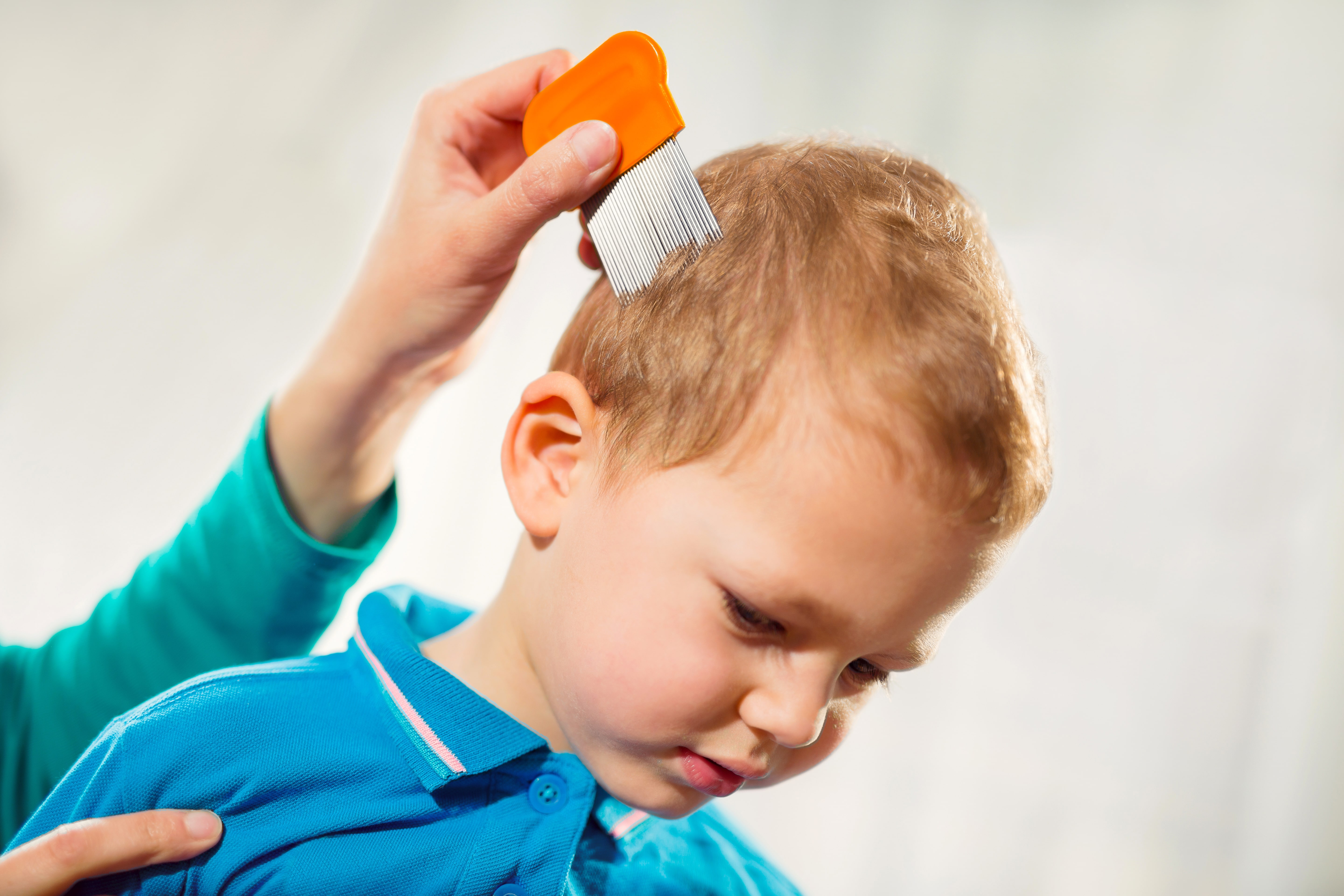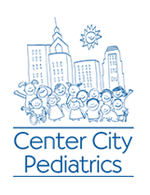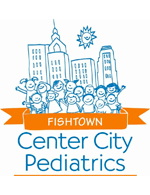Received notice of an outbreak of lice in school? In this post, our pediatricians share head lice information for parents. Learn about lice symptoms, lice treatment, and lice prevention.

For many parents, receiving the inevitable school email about the latest case of head lice in the classroom is enough to strike fear into hearts, trigger house-cleaning frenzies, and lead to outbreaks of head lice folklore. While head lice are a common childhood nuisance of preschool and school-aged children, they don’t cause the spread of disease. Head lice infestations are also not due to poor hygiene. With the proper steps, head lice can be treated successfully at home. Does your child have a case of head lice? Stay calm and read on!
What are head lice?
- Head lice (or louse, if just referring to one) are tiny insects about the size of a sesame seed. An adult head louse is 2-3mm long, has 6 legs, and is usually tan to greyish white in color. Head lice feed by sucking small amounts of blood from the scalp, and have a lifespan of 3 to 4 weeks. They typically avoid light and stay close to the scalp.
- Adult lice attach eggs (“nits”) to the hair shaft, close to the scalp. Nits are oval in shape, about the size of a knot in thread, and may range from white-yellow to darker shades that may camouflage with the hair. These are tightly attached and don’t release easily from the hair shaft. These eggs incubate with our body heat and hatch in about 8 to 9 days. Once hatched, the empty egg casings remain attached and unless removed, will grow out with the hair.
What are the symptoms of a head lice infestation?
- With a first case of head lice, there may be no initial symptoms. The development of sensitivity to the louse’s saliva may take several weeks. Once a person becomes sensitized, symptoms of itchy scalp may develop. With chronic scratching, rashes and (uncommonly) sores may develop. Even after successful treatment, the itching may persist for a week or so. There are other causes of an itchy scalp that are not due to head lice, however, including eczema, allergy to hair care products, and other skin conditions.
How do head lice spread?
- As head lice can only crawl and can’t jump, hop, or fly, the most common cause of spread is through close, prolonged head-to-head contact. Contaminated objects like helmets, hats, combs, and brushes are uncommon causes of spread, due to the fact that head lice cannot survive more than a day away from a food source, and eggs can’t hatch at temperatures below that of body temperature.
How can I tell if my child has head lice?
- Direct visualization of nits or live lice will confirm the diagnosis.
- Have your child sit in a well-lit area, and part the hair section by section using a fine-toothed comb to inspect for crawling lice and nits.
- Head lice move quickly and avoid light; by wetting the hair beforehand, head lice may be slowed down and easier to find.
- Nits are most commonly spotted at the nape of the neck and behind the ears. Viable eggs should be within 1 cm of the scalp. Eggs found more than 1cm from the scalp are likely to be non-viable (dead) or empty.
- Dandruff, hairspray flakes, hair casts, or sand/dirt may sometimes be confused for nits. Remember: Nits are firmly attached to the hair shaft and difficult to remove, while these other particles are not.
My child has head lice. How should I treat it?
- The ideal head lice treatment should be safe, easy to use, inexpensive, and effective. Head lice medication should only be used when it is absolutely certain that your child has head lice.
- Because none of the available treatments (non-prescription or prescription) are considered 100% ovicidal (i.e. none kill 100% of lice eggs), parents should manually remove nits after completion of treatment to increase the likelihood of success. Fine-toothed “nit combs” specially designed for this purpose can make the task easier.
General safety tips
- Check with your child’s doctor before beginning any head lice treatment. Do not treat a child under 2 months of age before talking to your child’s doctor.
- Never let children apply the medicine. An adult should always apply the treatment.
- Follow the directions on the package exactly as written.
- Always rinse the medicine off over a sink and not in the bath or shower, to limit unnecessary contact of product with the skin.
- Use warm water, not hot, when rinsing off the product to prevent excess absorption of the medication through the skin.
- Never place a plastic bag on a child’s head to try to suffocate head lice.
- Do not leave a child alone with medicine in his or her hair while the hair is still damp. (Note: some products require the medication to dry and remain in the hair for a period of hours before washing out.)
- Store medicine in a locked cabinet or out of reach of children.
Over-the-counter (OTC) head lice treatments
These are considered “first-line” medications for head lice, are inexpensive, available without prescription, and effective in many cases when used appropriately.
1. Pyrethrin + Piperonyl Butoxide (e.g. RID)
- Manufactured from natural extracts of the chrysanthemum plant, pyrethrins are toxic to the nervous system of lice but have very low toxicity in humans. Avoid in persons allergic to chrysanthemums.
- This product is available as a mousse or shampoo and applied to DRY HAIR. It should be left on for 10 minutes before rinsing out. There is no residual lice-killing activity after rinsing out. As this may not kill 20-30% of eggs, treatment should be repeated in 7-10 days (most experts say day 9 is optimal for timing of second treatment).
- This product is approved for use in children 2 years of age and older.
2. Permethrin 1% Lotion (e.g. Nix)
- Permethrin is a synthetic version of pyrethrin, and is toxic to the nervous system of lice but extremely low in toxicity to humans. It does not cause allergic reactions in individuals allergic to chrysanthemums. It is applied as a crème rinse.
- Hair should be washed with a NON-CONDITIONING SHAMPOO, then towel dried. (Note: Hair conditioners and shampoos with conditioning agents may interfere with the effectiveness of this product. Do not apply these products prior to using permethrin.) The lotion is then applied, left on for 10 minutes, then rinsed off.
- Permethrin leaves a residue on the hair that is designed to kill newly hatched lice from the 20-30% of eggs not killed with the first application. Retreatment at 7-10 days (ideally day 9) should be considered, especially if live lice are seen at that time. Some experts propose treatment on days 0, 7, and 13 based on the longest possible life cycles of lice eggs.
- This product is safe to use for children 2 months of age and older.
3. The Nuvo Method
- While technically not considered a “first-line” treatment method, the Nuvo method is a safe and inexpensive option to treat head lice, especially for situations where treatment with OTC first-line agents has failed.
- The Nuvo method uses Cetaphil Gentle Skin Cleanser (8 oz bottle for short hair, 12 oz bottle for longer hair), available at any drugstore. It works by coating and suffocating head lice. Success rates have been reported to be 96%.
- What does the Nuvo method involve?
- Thorough application of Cetaphil to dry hair from scalp to hair ends.
- Combing out as much of the excess product as possible from the hair.
- Blow-drying the hair thoroughly. This dries the lotion onto the hair and scalp and “shrink-wraps” the head lice, suffocating them.
- The dry lotion must stay on the hair for at least 8 hours before removal. Typically, the product is removed at the next usual bath or shower.
- Repeat once a week for two more treatments.
- For more detailed information (advised for those attempting this method) visit nuvoforheadlice.com
Prescription head lice treatments
- In 2016, a study was published that demonstrated the emergence of head lice with genetic mutations causing resistance to (i.e. ability to survive) permethrin and pyrethrin-based products, in samples collected in 48 states. Widespread media coverage has popularized the term “super lice” to refer to these resistant head lice.
- While resistant lice are becoming more common, first-line OTC agents (pyrethrin and permethrin) are still recommended as the preferred first option for children with head lice, unless a community is known to have high rates of resistant lice. Other reasons for recurrent head lice infestation include improper use of the product, failure to re-treat at the recommended time frame, and reinfection. If, however, your child continues to have issues with head lice despite 2 or 3 proper treatments, contact your doctor to see if a prescription is the next step.
- There are several prescription-based medications for head lice. These products differ in minimum age-limits for use, expense (which may depend on your insurance plan), and other considerations. Talk to your doctor about which one may be a good option for your child.
What other measures should I take to prevent the spread of head lice?
- If a child is found to have head lice, all household members should be checked for head lice, and those with live lice or nits within 1 cm of the scalp should be treated. (Experts also advise treating any household members who share a bed with the affected child, even if no live lice or nits are seen.)
- Given that the spread of lice through indirect contact (i.e. personal items and bedding) is uncommon, and head lice don’t typically survive more than one day away from the scalp, only items that have been in contact with the head of the affected child in the 48 hours before treatment should be considered for cleaning (e.g. clothing, bedding, headgear).
- Washing, soaking, or drying items at temperatures greater than 130°F will kill stray lice or nits. Furniture, carpeting, car seats, or other fabric-covered items can be vacuumed. Viable nits are unlikely to hatch at room temperature.
- Although rarely necessary, items that cannot be washed (e.g. stuffed animals) can be bagged in plastic for 2 weeks, a time when any nits than may have survived would have hatched and the resulting lice would die without a food source.
Are there any natural remedies proven to treat or prevent head lice?
- While parents might easily find Internet-based advice promoting the use of mayonnaise, margarine, olive oil, or petroleum jelly as home remedies to suffocate head lice, and apple cider vinegar, vodka, or WD-40 to loosen nits from the hair shaft, no scientific evidence supports these approaches (and there are some unacceptable risks with a few of these!) These approaches are not recommended to treat lice.
- Essential oils like tea tree oil and lavender are often promoted as a natural remedy to treat or prevent head lice, and have been used in traditional medicine for this purpose. As “natural” products, essential oils are not required to meet FDA pharmaceutical standards for effectiveness, purity, or safety. While some studies (several funded in part by the manufacturers of the natural remedy being tested) suggest a benefit of tea tree oil to treat head lice, no well-designed studies are available to support the safety and effectiveness of these remedies. In addition, safety concerns include the endocrine-disrupting properties of tea tree and lavender essential oils when absorbed through the skin, neurologic effects of tea tree oil if accidentally swallowed by young children, and skin reactions in some individuals with sensitive skin. At the present time, these remedies are not recommended for the treatment or prevention of head lice.
What about “no – nit” school policies?
- While some daycares and schools may choose to enforce a “no-nit” policy that requires children to be free of nits before returning to school, the American Academy of Pediatrics and the CDC both advise against the exclusion of healthy children from school due to head lice or nits, given that head lice do not pose a public health risk, are not highly contagious in the classroom, and such policies create an undue burden on families as well as unnecessary absenteeism in schools. In addition, misdiagnosis from school-based lice checks by non-medical personnel is common.
- If your school has a no-nit policy, performing a thorough comb-out with a lice comb to remove nits after treatment may reduce confusion regarding persistence of infection versus non-viable (killed) nits. Note that this is not considered a necessary step for successful treatment, but may increase treatment success.
For more information regarding head lice, visit the following resources:
Note: The information contained in this article has been provided as general health information and does not constitute specific medical advice for your child.
 33 Rock Hill Rd
33 Rock Hill Rd 1740 South Street
1740 South Street 2365 East York Street
2365 East York Street